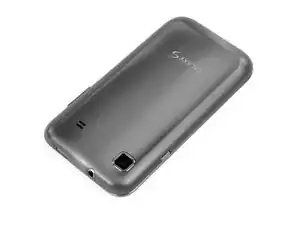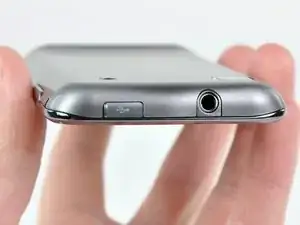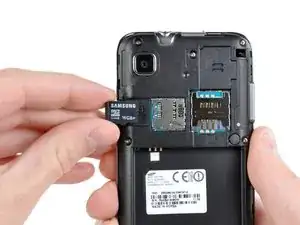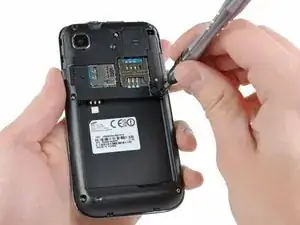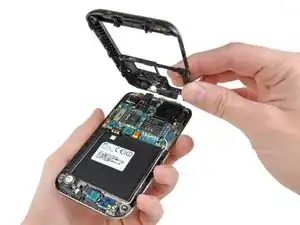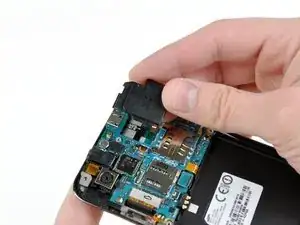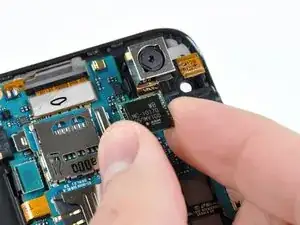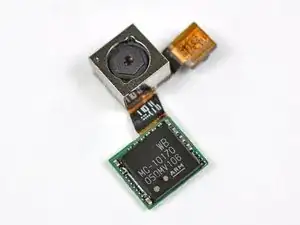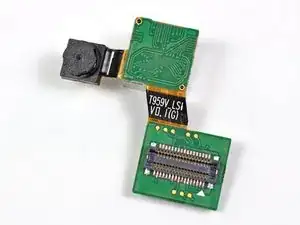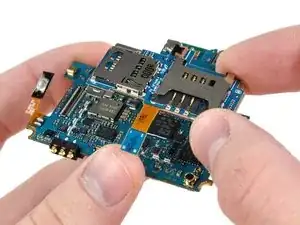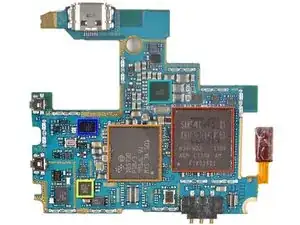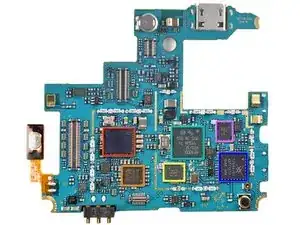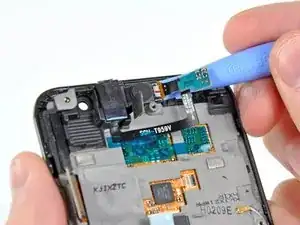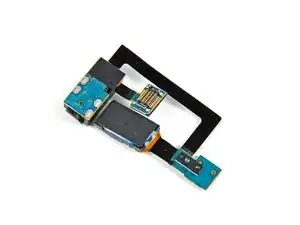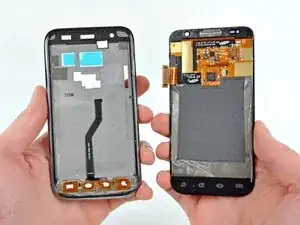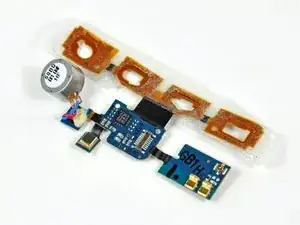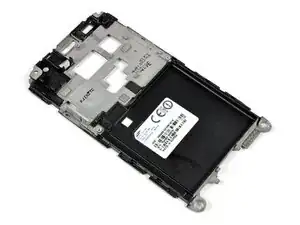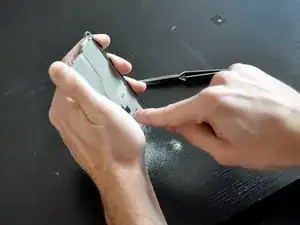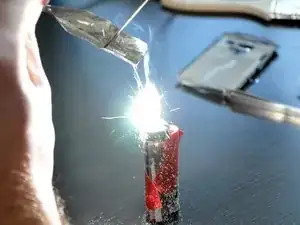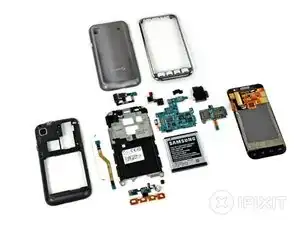Introduction
Introducing the Samsung Galaxy S 4G. Not to be confused with the Samsung Galaxy S, Galaxy S II, or Galaxy Tab, the Galaxy S 4G is Samsung's newest entry to the smartphone arena. Join us today as we unravel the mysteries of the Galaxy S 4G.
Follow us on twitter to get all the latest updates.
Tools
-
-
It's been nearly a year since T-Mobile released the Samsung Galaxy S in the United States, and this time they're back with the Samsung Galaxy S 4G.
-
The Samsung Galaxy S 4G is the newest revision (at least available to the public) to the Samsung Galaxy S (Samsung Vibrant).
-
Tech Specs:
-
1 GHz Processor
-
480 x 800 Super AMOLED display
-
5.0 MP Rear-facing camera and a VGA Front-facing camera
-
1 GB onboard memory, with up to 32 GB microSD storage
-
512 MB DRAM
-
-
-
The Samsung Galaxy S 4G's graphite-looking back complements the phone's sleek contour.
-
The first bummer: what we have here is a fairly noticeable gap between the glass front panel and the outer framework. It'd be less of a concern if a cell phone's primary home isn't the pocket of its user.
-
-
-
Gone are the days of mini-USB. The Galaxy S 4G boasts a micro-USB connector and a 3.5 mm headphone jack alongside the top of the phone.
-
A cool sliding door keeps the micro-USB port lint-free.
-
-
-
Well lookie lookie...what have we here? The rear panel is easily removed, revealing both SIM and microSD card slots, as well as what seems to be a replaceable battery!
-
As predicted (not that we're psychic or anything) the battery is easily removable, thus easily replaceable. Thanks, Samsung!
-
You may be asking yourself what powers this device?
-
The 3.7V Li-Ion battery inside the Galaxy S 4G lists a capacity of 6.11 Watt-hours, or 1650 mAh.
-
-
-
Removing the microSD card requires little effort at all.
-
Let's remove those pesky screws.
-
With the assistance of our good friend, the plastic opening tool, we can unclip the plastic outer framework of the Galaxy S 4G.
-
-
-
Adios plastic framework...we hardly knew ye...
-
With the plastic framework gone, we get a good look at the Galaxy S 4G's internals. The motherboard is quite compact.
-
The first item that is readily removable is the loudspeaker. Removing it requires a simple flip of the ZIF ribbon cable lock on the motherboard.
-
-
-
After removing a few more connectors, the motherboard assembly can be lifted right off the inner framework.
-
An interconnect board is adhered to the rear EMI shield and hosts the SIM card and microSD card slots. We popped them off as one piece to get a look at the ICs that make this thing tick.
-
-
-
Big players on the front of the motherboard include:
-
Samsung KB100L00WM-A453 4Gb (512 MB) of mobile DRAM which contains a 1 GHz Intrinsity Processor in a package-on-package configuration, according to the fine folks at Chipworks.
-
ST Ericsson's THOR M5730 HSPA+ Thin Modem
-
Bosch Sensortec Accelerometer
-
Maxim MAX8987 DC Power Management
-
ST Ericsson GNS7560 Single Chip GPS Solution
-
-
-
On the back of the board:
-
Broadcom BCM4329 802.11n Wi-Fi, Bluetooth 2.1, and FM Tuner
-
Wolfson Microelectronics WM8994 Audio CODEC
-
Skyworks SKY77460 WCDMA/HSPA+ Power Amplifier
-
ST Ericsson RF5000 Radio Transceiver (part of THOR M570 chipset)
-
Skyworks SKY77544 TX-RX Front End Module
-
Skyworks SKY77447 Load Insensitive Power Amplifier for WCDMA / HSDPA / HSUPA / HSPA+ Band II
-
-
-
Unfortunately, the Galaxy S 4G cannot be disassembled further without prying the front panel off the inner metal frame.
-
Heat gun time!
-
Separating the front panel assembly from the rear panel assembly requires loosening the adhesive around the perimeter.
-
Add a little heat and some opposing forces, and BAM! Front panel and rear panel successfully separated.
-
On the back of the display assembly we find the Atmel mXT 224 touchscreen controller, which provides capacitive multi-touch capabilities, and is also found in yesterday's Motorola Atrix teardown.
-
-
-
The outer chromed plastic ring can now be removed from the metal inner frame.
-
At this point we can also remove the button capacitive touch sensors, vibrator unit, lower microphone, and antenna cable connector -- all of which lie on the same assembly.
-
-
-
Ladies and gentlemen, welcome to the first ever segment of Science with iFixit.
-
Without any further ado, let's proceed!
-
-
-
Word on the street was that Samsung was using magnesium instead of aluminum for some of its structural components. The most obvious candidate was the main structural support plate that nearly every component on the phone mounted to. But how could we find out for sure?
-
-
-
A simple way to verify the magnesium hypothesis was to file away a small pile of dust from the mid-plane frame and...well...light it on fire.
-
Yup, looks like it's magnesium.
-
But why magnesium? If you take a look at your old pal, the Periodic Table, it is one of the lightest metals - more so than even aluminum. Additionally, its high strength makes it ideal for providing structural support where weight is a major concern.
-
-
-
Samsung Galaxy S 4G Repairability Score: 6 out of 10 (10 is easiest to repair)
-
Removing the rear panel to replace the microSD/SIM cards and the battery requires no tools.
-
Attaching components like the headphone jack to separate cables makes their replacement less costly than replacing the entire motherboard.
-
Less-than-stellar fit of the front panel and chromed plastic accents can lead to cosmetic issues after long-term use.
-
The front panel is adhered to the AMOLED display, so they must be replaced as one expensive unit.
-
One comment
How similar is this to the S4 model with the micro USB? I need to repair both my wife's phone and my own as the miniUSB jack is worn out. FWIW, I am a retired electronics technician, repairing mainly audio equipment such as amplifers and the like. I have the tools for SMD as well. I hope there is a teardown of the S4 already and maybe someone can point me to it? I will continue my search and book mark this page as a reference. THANKS!!!

